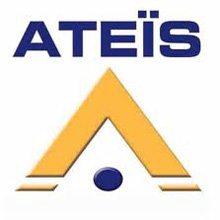 |
| Ateis controllers and directional loudspeakers give more coverage and flexibility |
The city of Nice is the largest on France's Cote d'Azur, or, as most British holidaymakers know it, the French Riviera. It has long been a destination for travellers of all kinds and came to prominence in the late 18th century when the English upper class helped make its name as a winter health resort.
Today Nice attracts visitors in all seasons, with the enviable record of having 300 days of sunshine a year. Many of the rich and famous arrive by sea - the city's harbour is home to 50 percent of the world's super-yachts. More modest travellers use the TVG railway network but regardless of star/bank balance status, the main transport hub for the Riviera is Nice Cote d'Azur Airport, the third busiest in France behind Charles De Gaulle and Orly in Paris.
Jutting out into the Mediterranean on the western side of the Promenade des Anglais, the Airport has two terminals and serves the Principality of Monaco, courtesy of a helicopter link, as well as Nice itself and the French Riviera. According to figures released by the Airport's operator, 10,422,073 passengers passed through the terminals during 2011.
With that number of people to look after and inform, a reliable and efficient public address (PA) and voice alarm (VA) system is vital. The Airport had been using Bouyer equipment but this is now being replaced by a new installation, featuring Ateis controllers and directional loudspeakers, to give more coverage and flexibility.
The Airport's head of sound, Daniel Fabron, explains that the system is used for both general and VA announcements. "The wiring for sound at the airport is as much related to safety as it is to day-to-day business," he says. "We have to consider possible fire warnings and the protection of the passengers, so there are Vigipirate messages [the French national security alert system] but the installation is used mainly for broadcasting information, such as the boarding and loading of the planes and messages in the car parks. Some zones also have background music played in them."
Fabron says Nice Airport's needs in terms of the new installation were initially dictated by national and international standards for PA/VA systems. "It is then necessary to require a level of quality in the equipment and its implementation," he observes. "Moreover, we require a system to have the ability to grow and evolve. We also need to be able to have an installation that to a certain degree operates to our own needs and methods, while still working in cooperation with the manufacturers and installers."
The new system is based on a global Vox@Net IP network, which connects to individual Ateis IDA4 compact digital signal processor, digital message player and amplifier monitoring unit located in the buildings that make up the airport complex, including the terminals, car parks and lost luggage offices. In this way a specific system will be able to keep operating even if there is a problem in one of the other areas. Loudspeakers are a mixture of Ateis' steerable DSP-controlled Messenger G2s and Penton boxes. The microphones are part of Ateis PMIP-K TCP/IP desktop paging/intercom consoles, which have been adapted to the Airport's needs.
Fabron comments that Ateis was chosen because it fits the Airport's policy of using "evolutionary equipment" that also meets its requirements for quality. "The system that has been replaced by Ateis had become obsolete and its manufacturer was not able to propose solutions of improvement to us," he says. "As for Messenger we are very satisfied with it and the possibilities it can offer."
Right now the announcements are being made live but, Fabron says, messages are being recorded and will start to be used as well. "A mixture of human announcers and stored messages will be the order of the day in the near future," he adds.
As with all major PA/VA installations, the different buildings are divided into zones so specific areas can be isolated and receive messages that are relevant there. Taking the new system in Terminal 1 as an example, Fabron says there are only in the region of 40 main zones but that these are sometimes divided into "sub-fields", which will be able to interact with at least six audio streams simultaneously. "The old installation did not offer half of this capacity," he observes.
Installation work has been going on for a year and is being carried out by electrical engineering contractor Jean Graniou, which has offices in Nice as well as Cannes and Monaco, and Ateis partner MSA, a specialist in VA and audio systems. It is due to go into service soon.
Daniel Fabron describes the Ateis installation at Nice Airport as "malleable" and fitting in with what is needed for such a busy air hub. The glamorous people passing through the terminals are probably glad of any information coming over the PA that helps them but most likely don't give a second thought to what technology might be behind that.




